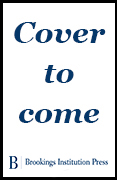Editor’s Note: On April 2-5, 2016, Ernesto Talvi participated in the Latin America Shadow Financial Regulatory Committee (CLAAF), held in Washington, D.C. The committee is composed of a group of prestigious independent Latin American economists, former policymakers, and academics with strong expertise in the field of macroeconomics, banking and finance and whose goal is to identify and analyze challenges and risks for the region. The following document—Policy Statement Number 35—was released at a press conference held at the Center for Global Development immediately following the meetings. It discusses the actions taken so far by the Argentine government and recommends a series of policy actions to establish credibility, modernize the regulatory framework, and boost investment, economic activity, and employment.
To read this lecture in Spanish, click here.
In the past decade or so, Latin America has been characterized by two quite distinct groups of countries. On the one hand, countries such as Chile, Colombia, Costa Rica, Mexico, Peru, and Uruguay have expanded anchored on a market-friendly economic model, integrated to international capital markets. On the other hand, with varying degrees, countries such as Argentina, Brazil, Ecuador, and Venezuela have adopted economic models with significant degrees of government intervention and widespread controls on trade and capital flows. Within the latter group, Argentina and Venezuela represented the most extreme version of the neo-populist paradigm.
With the election of Mauricio Macri last December, Argentinians voted to initiate a potentially substantive change in economic policy. The return of Argentina to pro-market policies and to integration to international capital markets is fraught with challenges in terms of reform-strategy design and in terms of implementation risks.
Whether Argentina is successful in its endeavor will likely influence the on-going public policy debates in several other countries in the region. In particular, in view of the mounting economic difficulties in Brazil and Venezuela, Argentina’s experience could be highly relevant.
1. Initial conditions
From the outset, Argentina’s new government faced a complex set of economic imbalances and distortions, including:
(a) A very difficult fiscal situation characterized by a record-high fiscal deficit of the order of 8 percent of GDP, and an unprecedented level of overall public expenditures (at the federal, provincial, and municipal levels) of about 50 percent of GDP in 2015, that doubles the levels observed at the beginning of the 2000s. The sharp increase in public expenditure was mostly reflected in higher public employment and the wage bill, pensions, and subsidies, while public investment remained low and inefficient.
(b) The debt restructuring carried out in 2005 had resulted in a series of lawsuits lost by Argentina in US courts, and ultimately upheld by the U.S. Supreme Court, effectively isolating the country from international capital markets. Lack of access to market-based finance forced the government to rely on monetary financing by the central bank that, in turn, fueled increasing inflation and large losses of international reserves.
(c) The depletion of international reserves had led the previous government to adopt draconian foreign exchange and capital controls that stopped capital inflows and foreign investment almost completely, as the parallel exchange rate was 50 percent to 70 percent higher than the official exchange rate. As the adoption of foreign exchange restrictions proved unsuccessful at stopping the reserve drainage, arbitrary restrictions were imposed on the outflow of dividend payments and on the provision of foreign exchange to pay for imports at the official rate. As net international reserves fell close to zero, the mounting arbitrary restrictions on imports contributed to an already stagnant economy and adversely distorted entrepreneurial and household incentives.
(d) The decision to substitute a fully funded pension system with a pay-as-you-go system facilitated the decapitalization of the State and increased cash flow requirements at the federal government by nearly 4 percent of GDP annually between 2010 and 2015.
(e) Despite an inflation rate between 25 percent and 40 percent per annum between 2008 and 2015, the former government maintained prices of public services almost frozen in nominal terms. Maintaining a price structure that fails adequately to reflect average costs of public-services provision—such as electricity, gas, and transportation—resulted in a dearth of investment in needed infrastructure. Moreover, by compensating operating losses with direct subsidies, the government added a 4 percent of GDP worth of annual deficit to public finances, while the quality of public services provision deteriorated severely.
(f) In the wake of a reversal in the terms of trade experienced by Argentina, as well as other countries in the region, the former government maintained high and unsustainable export taxes that turned many regional productive activities uncompetitive.
2. International context
Argentina’s adjustment will take place facing significant headwinds from the rest of the world. Commodity prices, and in particular agricultural commodities, have fallen sharply and are expected to remain depressed. In particular, the world price of Soy has fallen by nearly 50 percent from its 2012 peak, and future prices through 2019 signal continued weakness, with prices at about the same level as today.
Conditions in world financial markets are also unfavorable. World real interest rates are likely to remain very low and the pace of tightening of U.S. monetary policy has slowed. However, capital flows into emerging markets in general are not expected to recover strongly, and there are further downside risks associated with China’s deceleration. Argentina’s access to capital markets is very uncertain and hinges on the success of its adjustment policies and the return to sustainable growth.
Weak growth of world trade and the crisis in Brazil indicate that external demand will be a drag for Argentina’s growth in the near future. Brazil, Argentina’s biggest trade partner, is suffering its worst recession in decades. Brazil’s GDP fell by 3.8 percent in 2015 and it is expected to fall between 3 and 3.5 percent in 2016. Out of total exports of $68.3 billion in 2014, Argentina exported $13.9 billion to Brazil, followed by China with $4.5 billion and the United States with $4.0 billion. Compared to 2013, this implied a reduction of exports to Brazil by $2.3 billion. Most of Argentina’s exports to Brazil are manufactured goods (vehicles, close to $6 billion in 2014 down from $8 billion in 2013) while exports to other markets are mainly commodities. In addition, the negative effects of the recession in Brazil will affect tourism and capital flows. Thus, the committee believes that Brazil will continue to be a risk factor for Argentina over the short-term.
3. Early decisions
The new administration implemented policies in several crucial areas in the first 100 days, and implicitly revealed a sequencing of reforms that recognizes the constraints posed by the political environment—in particular, its minority stake in Congress.
At the outset, the new administration moved swiftly to remove the toughest foreign exchange restrictions and proceeded effectively to unify the foreign exchange market. Exchange rate unification—which implied a depreciation of around 40 percent of the official exchange rate—appears to have had a limited pass-through to the price level. Indeed, exchange-rate unification had been expected for some time, and there is evidence that the pass-through to prices had already taken place during 2014 and 2015, as the parallel exchange rate had become the relevant rate for price-setting decisions.
The second important area where the new administration acted quickly is that of taxation. In particular, making good on campaign promises, the new administration doubled the non-taxable minimum of the personal income tax, and eliminated all export taxes except for soybean. In the latter case, the elimination of the 35 percent export tax will take place with reductions of 5 percentage points per year starting in 2016. These tax reductions are estimated to add 1.3 percent of GDP to the 2016 fiscal deficit. Additional revenue losses will derive from a Supreme Court decision issued in December by which a significant portion of the tax revenue will be reallocated to provincial governments. Such decision, which was extended by the outgoing government to all provinces by decree, has now been renegotiated to be transferred over a 5-year period.
Partly in connection with the above fiscal measures, the new administration also moved in the direction of adjusting several regulated prices, to remove distortions and restart investments in infrastructure. Regulated prices of energy, public transportation, water, gas, and petroleum have been sharply increased, reducing government subsidies by about 1.5 percent of GDP. The social impact of these adjustments is expected to be largely offset by the previously mentioned tax reductions.
Finally, the government rapidly sought to resolve to outstanding default situation generated by the lawsuits lost by Argentina in U.S. courts and by proceedings outstanding at International Centre for Settlement of Investment Disputes. Agreement was reached with most holdouts, and the government obtained a significant political success in Congress with the abrogation of two laws that impeded the implementation of those agreements. The resolution of the holdout situation is regarded by the government as instrumental in allowing the Argentine economy to regain access to international capital markets. The agreements to settle obligations with holdouts initially imply a new debt issue of $12 billion.
Normalization of relations with the international capital market as well as the International Monetary Fund (IMF) is widely expected to contribute to an improvement in the monetary policy front. While Argentina works towards restoring the credibility of its statistics—in particular, the price level and GDP—the government has announced the intention to focus the role of the Central Bank on gradually reducing inflation and monetary financing of the budget deficit, while reducing its focus on the nominal exchange rate as price anchor. The announced gradual reduction in the monetary financing of the deficit relies on the assumption that the budget deficit will be increasingly financed through debt.
To manage the difficult monetary










